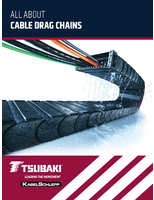Supply Voltage Regulator suits satellite STB applications.
Share:
Press Release Summary:
Single-output LNB voltage regulator is designed for supplying power/control signals from satellite STBs to low-noise blocks of single antenna ports. Unit includes current-mode boost converter and low-noise linear regulator, as well as circuitry for tone injection and pin-controllable interface. Final regulated output voltage at cathode of back diode supports operation of antenna port for single tuner, while external modulation input transfers modulated DiSEqC command to output.
Original Press Release:
ISL9491 Single Output LNB Supply Voltage Regulator for Satellite Set-Top Box Applications
These devices are designed for supplying power and control signals from advanced satellite set-top box (STB) modules to the low noise blocks (LNBs) of single antenna ports. Each device consists of a current-mode boost converter and a low-noise linear regulator along with the circuitry required for tone injection and pin controllable interface. The device makes the total LNB supply design simple, efficient and compact with low external component count.
The current-mode boost converters provide the linear regulator with input voltage that is set to the voltage at the VOUT pin plus a minimal drop to insure minimum power dissipation across the internal LDO. This maintains constant voltage drop across the linear pass element while permitting adequate voltage range for tone injection.
The final regulated output voltage is available at the cathode of the back diode to support the operation of an antenna port for a single tuner. The outputs can be set to various voltage level for the desired polarization reception by means of the logic presented to the VSET0 and VSET1 pins. An EN pin is to be driven high to enable the outputs for the PWM and linear combination; setting EN low disables the output, forcing a shutdown mode.
The external modulation input (EXTM) can accept a tone modulated DiSEqC command and transfer it symmetrically to the output to meet DiSEqC 1.x protocol. An external DiSEqC tank circuit can also be implemented to support DiSEqC 2.x.




